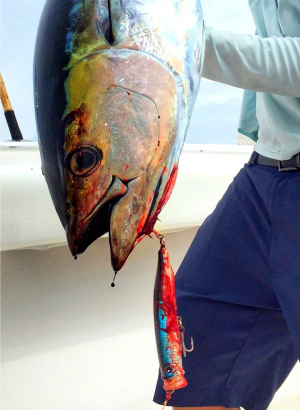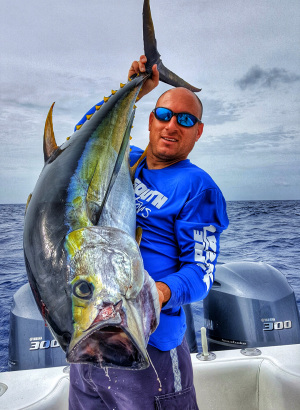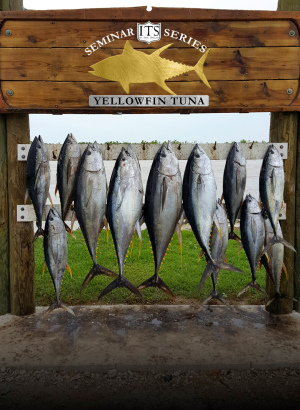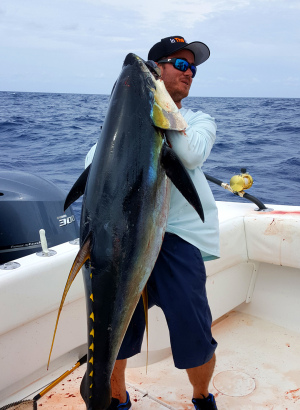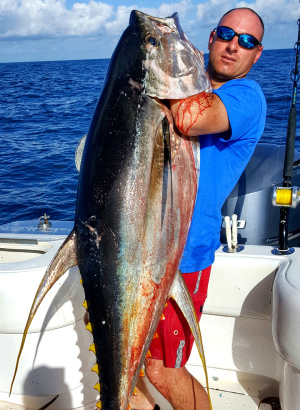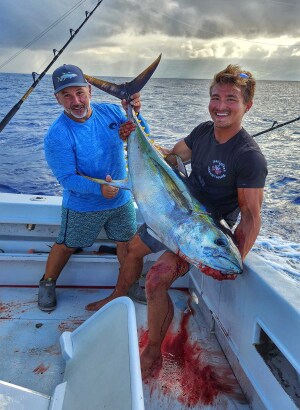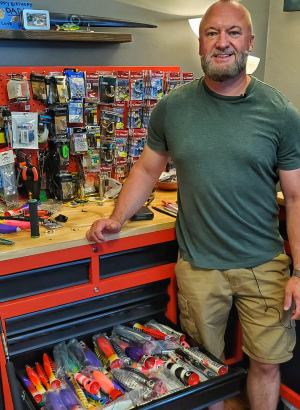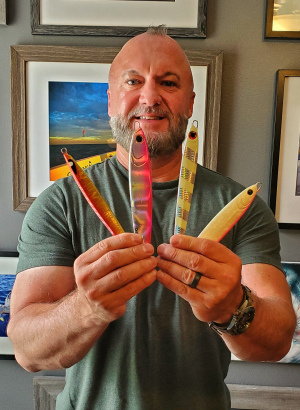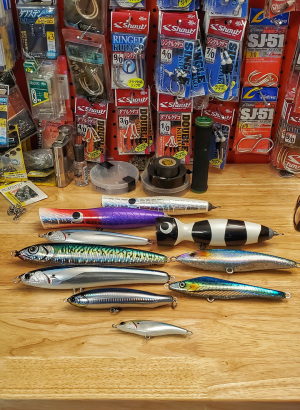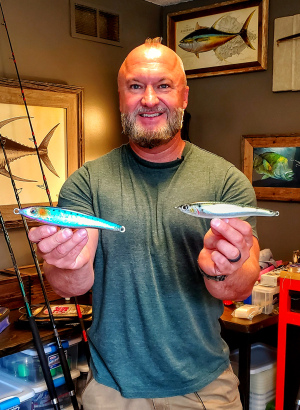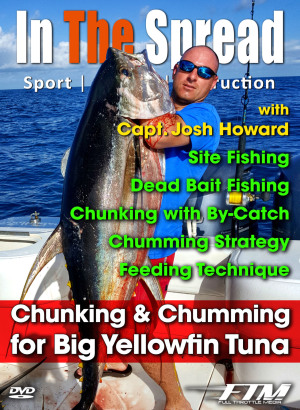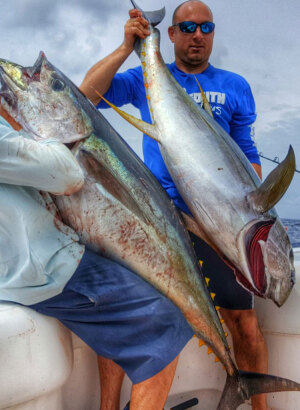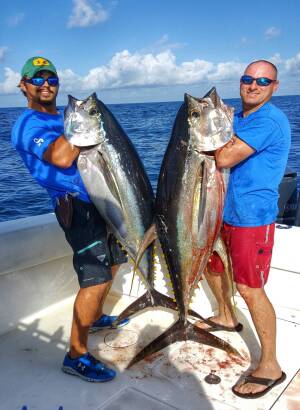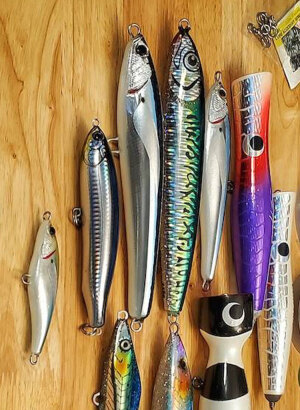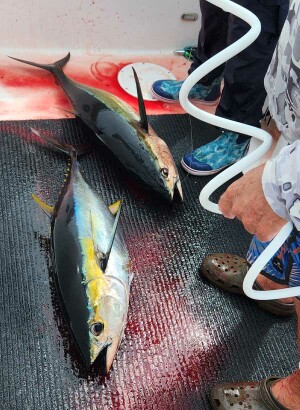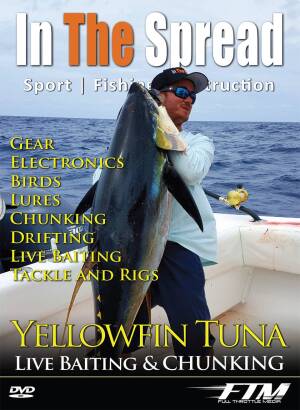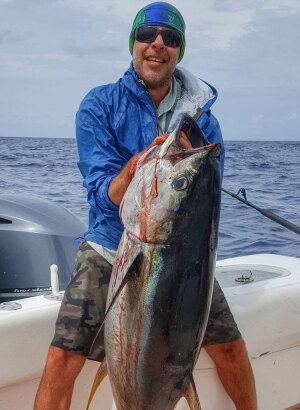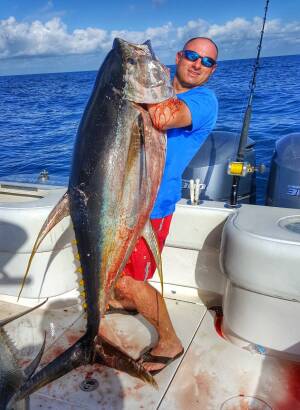Captain Josh Howard reveals proven yellowfin tuna fishing techniques in Venice, Louisiana's productive Gulf waters. Learn live chumming strategies, optimal gear selection, and tactical approaches around oil platforms that consistently attract these powerful fish. This comprehensive guide covers bait selection, fighting techniques, and seasonal patterns essential for successful yellowfin fishing expeditions.
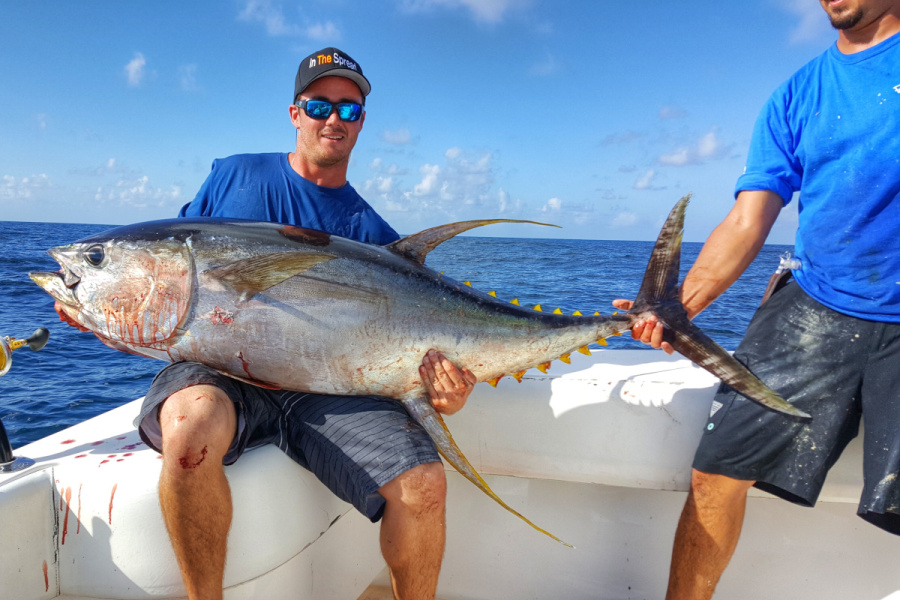
Learn Light Tackle Yellowfin Tuna Tactics
Light Tackle Tactics for Yellowfin Tuna in the Gulf of Mexico
Key Points:
- Introduction: Overview of Capt. Josh Howard's expertise in light tackle yellowfin tuna fishing in Venice, Louisiana.
- Geographical Advantage: The abundance of yellowfin tuna in the Gulf of Mexico and the unique structure that enhances fishing opportunities.
- Techniques and Tactics: Detailed discussion on live chumming, bait selection, and fishing strategies around oil platforms and deep water trawlers.
- Tackle and Equipment: Insights into preferred hooks, rods, reels, line types, and bait for optimal yellowfin tuna fishing.
- Advanced Tactics: Techniques for bait distribution, leveraging currents, and effective hook setting and fighting strategies.
The Gulf of Mexico is a true marvel of nature, boasting a rich tapestry of marine life that draws fishing enthusiasts from around the globe. Among the most sought-after species in these waters is the yellowfin tuna, a formidable adversary that demands skill, patience, and a deep understanding of its behavior and habitat.
Venice, Louisiana, has earned its reputation as a premier destination for yellowfin tuna fishing, thanks to its unique location and favorable conditions. Situated at the mouth of the mighty Mississippi River, Venice benefits from the nutrient-rich outflow that attracts a wide array of baitfish, which in turn draws in the highly prized yellowfin tuna.
In our video "Live Bait Chumming Yellowfin - Venice Louisiana," viewers have the opportunity to learn from one of the most respected names in the industry, Capt. Josh Howard. With years of experience navigating the waters off Venice and a proven track record of landing impressive yellowfin tuna, Capt. Howard is well-equipped to share his insights and techniques with aspiring anglers.
One of the key strategies highlighted in the video is the use of live bait chumming. This technique involves strategically deploying live baitfish to attract yellowfin tuna to the boat. By carefully selecting the right type of baitfish and presenting them in a manner that mimics their natural behavior, anglers can entice even the most finicky tuna to strike.
Capt. Howard also emphasizes the importance of understanding the unique characteristics of the Gulf of Mexico's underwater landscape. By identifying specific structures, such as oil rigs, submerged wrecks, and natural reefs, anglers can pinpoint areas where yellowfin tuna are likely to congregate. This knowledge, combined with the ability to read weather patterns, currents, and water temperature, can significantly increase the chances of a successful outing.
Throughout the video, viewers will gain valuable insights into the gear and equipment needed to tackle these powerful fish effectively. From the proper selection of rods, reels, and line to the use of specialized lures and rigging techniques, Capt. Howard leaves no stone unturned in his quest to educate and inspire fellow anglers.
Beyond the technical aspects of yellowfin tuna fishing, the video also showcases the breathtaking beauty of the Gulf of Mexico and the camaraderie that exists among the fishing community in Venice. The thrill of the chase, the adrenaline rush of a hook-up, and the satisfaction of landing a majestic yellowfin tuna are all captured in stunning detail, serving as a testament to the allure of this incredible fishery.
Yellowfin Tuna Fishing in Venice, Louisiana Upclose
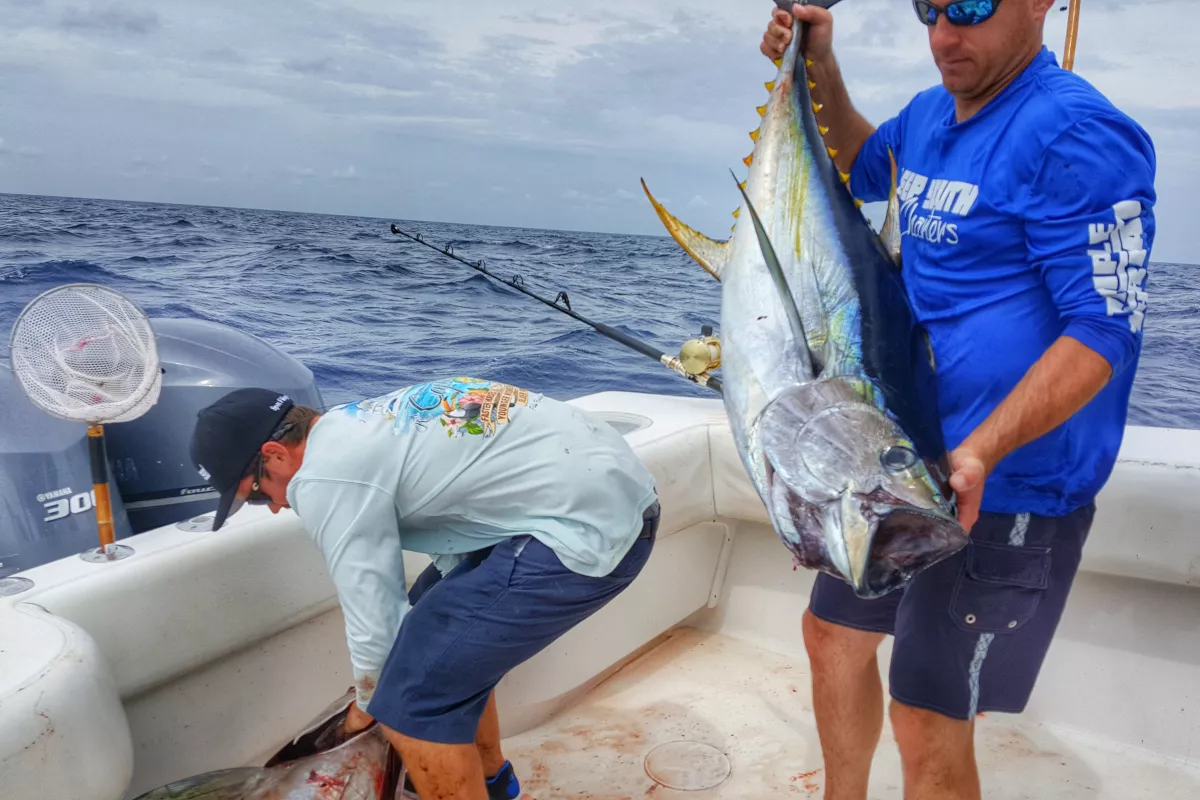
Venice, Louisiana, is not just a location; it's a beacon for anglers seeking the ultimate fishing experience. Revered as one of North America's finest fishing destinations, it offers more than just a day out on the water. It promises an adventure, a pursuit of one of the ocean's most sought-after prizes: the yellowfin tuna.
The allure of Venice goes beyond its scenic beauty. It lies in the unique blend of ecological factors that make it an ideal habitat for yellowfin tuna. The Gulf of Mexico, with its warm currents and deep waters, creates a perfect storm of conditions favoring the proliferation of marine life. This region is characterized by a complex underwater landscape, featuring continental shelf drop-offs, deep sea canyons, and a network of oil rigs that act as artificial reefs. These structures provide shelter and breeding grounds for an array of species, leading to a rich and diverse food web. In this thriving ecosystem, the yellowfin tuna find abundant prey, ranging from small baitfish to squid, making them frequent visitors to these waters.
The presence of yellowfin tuna in Venice is a testament to the Gulf's health and productivity. These fish, known for their size, strength, and speed, are a challenging and rewarding target for sport fishermen. Anglers come to Venice not only for the chance to battle these powerful creatures but also for the opportunity to land a significant catch. Yellowfin tuna in this region are known to reach impressive sizes, with many specimens tipping the scales at over a hundred pounds. This reputation for large catches draws fishing enthusiasts from all over the world, eager to test their skills and luck against these formidable opponents.
Moreover, the fishing experience in Venice is enhanced by the local fishing community's expertise and hospitality. Knowledgeable charter captains and guides, well-versed in the subtleties of the local waters and tuna behavior, offer invaluable insights and techniques to both novice and experienced anglers. This combination of expert guidance, ideal fishing conditions, and the thrill of chasing one of the ocean's top predators makes Venice, Louisiana, a true angler's paradise.
The Gulf's Unique Structure: A Fishing Haven
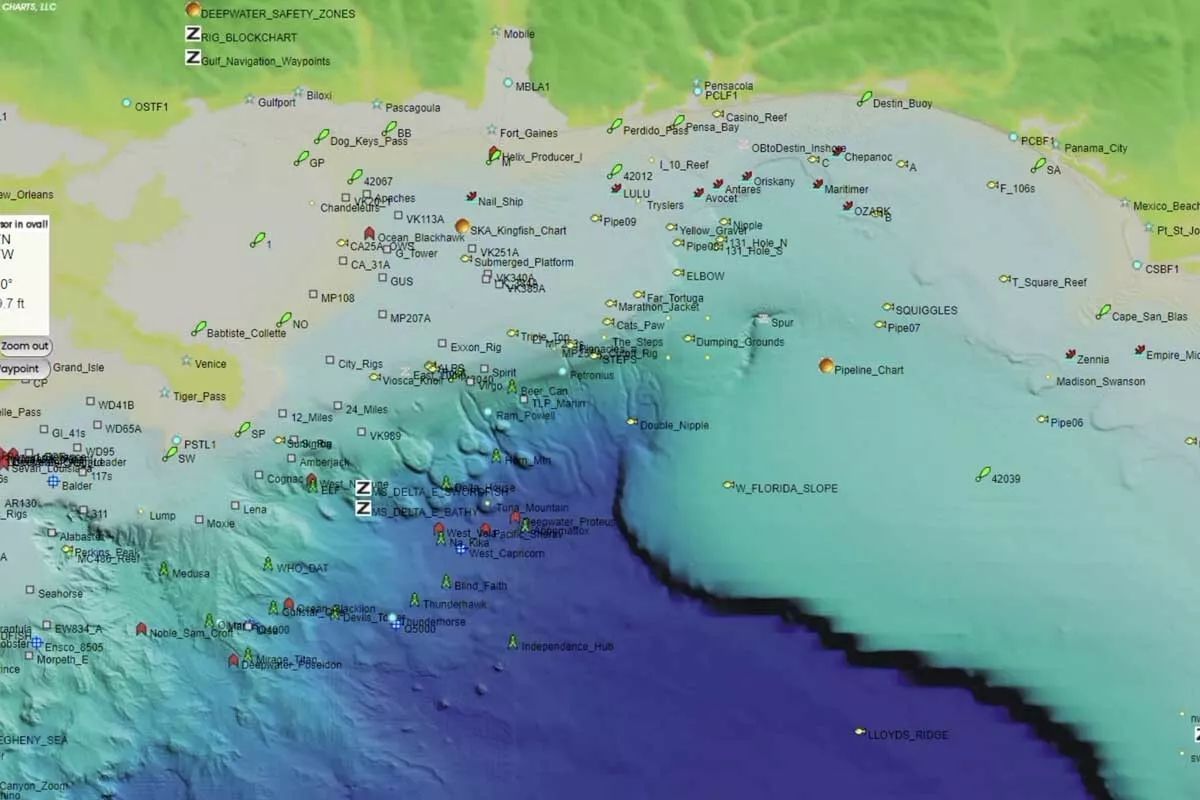
The Gulf of Mexico off the coast of Louisiana presents a unique marine landscape, shaped significantly by human endeavors, yet flourishing with natural bounty. The presence of oil platforms, floating structures, and underwater pipelines creates an environment unlike any other, transforming this section of the Gulf into a thriving aquatic ecosystem.
These man-made structures, initially built for the oil industry, have inadvertently become vital components of the marine environment. The oil platforms, towering above the sea's surface, extend deep beneath the waves, their underwater portions providing an artificial reef-like environment. These structures offer a haven for a multitude of marine organisms. Barnacles, corals, and various forms of algae find a substrate to attach to and grow upon, creating a living, growing structure beneath the water. This growth, in turn, attracts smaller fish and invertebrates, which seek shelter and sustenance among the nooks and crannies of the platforms.
As this lower tier of the food chain flourishes, it draws in larger predatory fish, creating a vibrant and dynamic food web. The yellowfin tuna, a top predator in this ecosystem, is particularly attracted to these areas. The platforms and pipelines act like magnets for these fish, drawing them in with the promise of abundant prey. The yellowfin tuna, known for their keen predatory instincts, capitalize on the concentration of food in these areas, often forming vast schools around these structures.
The underwater pipelines, too, contribute to this underwater haven. Lying along the sea floor, these structures offer shelter and breeding grounds for various marine life, further enhancing the area's ecological richness. The complex network of pipelines and platforms creates a mosaic of habitats, each supporting different species and interactions, adding to the Gulf's overall biodiversity.
For anglers, this unique environment presents unparalleled opportunities. The areas around the oil platforms and pipelines are hotspots for sport fishing, especially for those targeting yellowfin tuna. These locations are often teeming with life, providing fishermen with not just the chance for a successful catch but also an incredibly immersive natural experience. The excitement of hooking a yellowfin tuna in these waters is enhanced by the backdrop of the industrial marvels, a striking contrast to the natural prowess of the fish they pursue.
Moreover, this symbiotic relationship between the man-made structures and the marine ecosystem highlights a fascinating aspect of environmental adaptation. It showcases how human structures, while initially intrusive, can become integral parts of the natural world, creating new habitats and opportunities for wildlife. This dynamic environment in the Gulf of Mexico, therefore, represents not just a premier fishing destination but also a testament to the resilience and adaptability of nature.
Live Chumming: A Lethal Technique
Live chumming, as expertly utilized by Capt. Josh Howard, stands out as a highly effective technique in the rich waters of the Gulf of Mexico, particularly off the coast of Louisiana. This method, more than just a fishing tactic, is an art form that intertwines deep understanding of the local marine environment with the intricate behavior of yellowfin tuna.
At the core of live chumming is the use of live bait to create a natural and irresistible lure for the tuna. The process begins with the careful selection of baitfish, which often includes species like scads, hardtails, or threadfin herring, known for their ability to survive and remain active on a hook. This vitality is crucial, as the movement and distress signals of the live bait create a commotion underwater, mimicking the natural conditions of a wounded or vulnerable prey. This display taps into the predatory instincts of the yellowfin tuna, drawing them towards the boat.
The skill in live chumming lies not just in the choice of bait but also in understanding how to deploy it effectively. Knowledge of the local currents, water temperature, and the behavior of baitfish in different conditions is vital. Capt. Howard, with his extensive experience, knows how to read these environmental cues and use them to his advantage. The bait must be released in a manner that mimics natural patterns, avoiding suspicion among the tuna. This often involves controlling the spread and depth of the chum line, ensuring it is enticing enough to attract tuna but not so dense as to satiate them quickly.
Adding to the complexity and effectiveness of this technique is the presence of deep water trawlers in the Gulf. These trawlers, often surrounded by a diverse array of marine life, become floating ecosystems in their own right. Yellowfin tuna, along with other predatory fish, are drawn to these trawlers, capitalizing on the easy pickings of the bycatch and discards. For the angler, these trawlers represent an opportunity to fish in areas where tuna are likely to congregate.
However, fishing near trawlers requires additional skill and caution. The moving vessels, with their nets and cables, present navigational challenges. An experienced angler like Capt. Howard understands how to approach these trawlers, positioning his boat to maximize fishing potential while minimizing the risks of entanglement or interference with the trawler’s operations.
In essence, live chumming in the vicinity of deep water trawlers is a dance of strategy and timing, requiring an intimate understanding of the ecosystem and the behavior of the target species. It's a practice that transcends mere fishing, embodying a deeper connection with the ocean and its inhabitants. For those who master it, like Capt. Howard, it's not only a method to catch fish but also a testament to their respect for and harmony with the marine environment.
Tackling the Challenge: Gear and Techniques
Choosing the right gear is a pivotal aspect of successful yellowfin tuna fishing, and Capt. Josh Howard's expertise provides invaluable guidance in this area. Each element of the gear, from hooks to lines, plays a critical role in not only attracting but also successfully landing these formidable fish.
Hook Selection
The selection of hooks for tuna fishing is more nuanced than it might initially appear. Capt. Howard emphasizes the importance of matching the hook size and style to the size of the bait being used. Smaller baitfish require smaller hooks that won't impede their movement, as the natural action of the bait is crucial for attracting tuna. Conversely, larger baits necessitate larger, stronger hooks that can handle the weight and strength of a large yellowfin tuna. The style of the hook also matters. Circle hooks are often preferred for their efficiency in securing a solid hook-set in the corner of the fish's mouth, reducing the likelihood of gut hooking and facilitating a safer release if needed.
Rod and Reel Considerations
When it comes to rods and reels, the choices are dictated by the type of fishing being done and the size of the tuna being targeted. Capt. Howard typically recommends heavy-duty, yet sensitive rods that can withstand the initial strike and subsequent fight of a yellowfin tuna, while still allowing the angler to feel the fish's movements and reactions. The reels need to be equally robust, with a smooth drag system to handle the long, powerful runs that yellowfin tuna are known for. High-quality reels that can hold a significant amount of line are essential, as yellowfin can easily take hundreds of yards of line during a fight.
Line Type: Braided vs Monofilament
The decision between braided line and monofilament is another crucial aspect of gear selection. Braided lines offer several advantages, including greater strength per diameter, which allows for more line capacity on the reel. They also have minimal stretch, providing better sensitivity and a more direct connection to the fish. However, monofilament has its own set of benefits, such as better shock absorption, which can be crucial during the fierce strikes and runs of a yellowfin tuna. Monofilament's stretch can be forgiving, allowing for a slight delay that aids in ensuring a good hook-set.
Capt. Howard often discusses the situation-specific preferences for line types. In scenarios where sensitivity and depth control are paramount, such as fishing around deep structures or in clear waters where line visibility can be an issue, braided lines might be favored. In contrast, in situations where a bit more give in the line could prevent break-offs during violent strikes, monofilament could be the better choice.
Conclusion
The wisdom that Capt. Howard imparts about gear selection for yellowfin tuna fishing is comprehensive and rooted in practical experience. He underscores the importance of a balanced approach – choosing gear that not only maximizes the chances of attracting and hooking a tuna but also ensures the endurance and flexibility needed to successfully land these magnificent and challenging fish. For anglers, the right gear selection, as advised by experts like Capt. Howard, can make the difference between a successful outing and a missed opportunity.
The Art of Bait Selection
The choice of bait in yellowfin tuna fishing is a critical factor that can significantly influence the success of an angling expedition. Yellowfin tuna, known for their discerning feeding habits and robust fighting capabilities, require a strategic approach to bait selection. This strategy hinges not only on the type of bait used but also on understanding the seasonal variations and availability of different baitfish in the Gulf of Mexico.
Understanding Bait Preferences
Yellowfin tuna are opportunistic feeders with a diet that varies based on what's available in their environment. Common baitfish like scads, hardtails, threadfin herring, tinker mackerels, and poagies each have unique characteristics that can be advantageous in different fishing scenarios.
- Scads: These small, oily fish are highly attractive to yellowfin due to their high-fat content, making them an excellent choice for chumming. Their robust nature allows them to survive longer on the hook, providing more dynamic action in the water.
- Hardtails (Blue Runners): Known for their durability and active swimming, hardtails are effective in drawing the attention of tuna from a distance. They are particularly useful when fishing around deep structures or in open waters.
- Threadfin Herring: These baitfish are renowned for their shiny, reflective bodies, which can be incredibly enticing in clear water conditions. Their fluttering movement mimics distressed prey, triggering the predatory instincts of yellowfin.
- Tinker Mackerels: Tinker mackerels are favored for their size and hardiness. They can withstand the strong strikes of tuna and are effective in deeper water fishing due to their natural swimming depth.
- Poagies (Menhaden): These baitfish are an all-around excellent choice due to their oily nature, which creates a noticeable slick in the water, attracting tuna from afar.
Seasonal Variations and Strategy
Seasonal changes play a significant role in bait selection. The availability of certain baitfish can vary throughout the year, influenced by water temperature, spawning cycles, and migratory patterns. For instance, threadfin herring may be more abundant in warmer months, while poagies could be more readily available in cooler seasons. An experienced angler, like Capt. Howard, understands these patterns and adjusts bait choices accordingly.
Moreover, the behavior of yellowfin tuna itself varies with seasons. During certain times of the year, they might prefer smaller, more abundant baitfish, while at other times, they might target larger, solitary prey. This behavioral aspect necessitates a flexible approach to bait selection, often requiring anglers to have a variety of bait types at their disposal.
The nuanced understanding of bait types, their seasonal availability, and how they align with the feeding habits of yellowfin tuna is a cornerstone of successful tuna fishing. Each type of bait offers distinct advantages and challenges, and the adept angler must be prepared to adapt their strategy to the conditions at hand. This deep knowledge, combined with practical experience, is what sets apart successful tuna fishermen, enabling them to entice and capture these formidable and highly prized fish.
Strategic Chumming and Fighting Techniques
Effective chumming is a nuanced and strategic aspect of yellowfin tuna fishing, transcending the mere act of bait distribution. It's an art form that combines knowledge of fish behavior, oceanography, and skillful manipulation of gear. Capt. Josh Howard's expertise in these areas is particularly insightful, offering valuable lessons for anglers aiming to master this technique.
Creating a Feeding Frenzy through Strategic Chumming
The primary goal of chumming is to create a feeding frenzy that attracts yellowfin tuna and encourages aggressive feeding behavior. This isn't just about throwing bait into the water; it's about how, where, and when you do it. Key factors include:
- Bait Type and Size: Using the right type and size of bait in your chum line is crucial. The bait should mimic the natural prey of the tuna in the area, both in size and behavior.
- Chumming Technique: The technique involves distributing the chum in a way that mimics natural food sources. This can mean varying the size of the bait pieces, the rate of distribution, and even the depth at which the chum is released.
- Using Currents: Understanding and utilizing ocean currents is vital. Currents can carry the chum scent and particles, creating a trail that leads tuna to your boat. The direction and strength of the current should dictate where and how you distribute your chum.
Drawing Fish Away from Structures
One advanced technique involves drawing fish away from structures like oil rigs or reefs. Tuna around these structures can be wary, and removing them from the safety of their environment can make them more susceptible to bait. This requires a delicate balance of distributing enough chum to entice the fish away while not overfeeding them.
The Battle: Adjusting Drag and Driving the Hook
Once a tuna is hooked, the real battle begins. This is where an angler's skill truly shines, and Capt. Howard's advice is particularly valuable:
- Adjusting the Drag: Proper drag setting is crucial. It must be tight enough to set the hook firmly but not so tight that it breaks the line or pulls the hook out of the fish's mouth. The drag should be adjusted according to the size of the fish and the strength of the line.
- Driving the Hook: The initial moments after hooking are critical. A swift and firm hook set is necessary to ensure the hook penetrates securely. This often requires a combination of rod movement and reel manipulation.
- Rod and Reel Mechanics: Skillful use of the rod and reel is essential in landing a yellowfin tuna. This includes pumping and winding techniques, maintaining the right line tension, and using the rod's action to tire the fish without overexerting the tackle.
Effective chumming and the subsequent battle with a yellowfin tuna are complex and multi-faceted aspects of the sport. They require a deep understanding of the fish's behavior, the environment, and the mechanics of fishing gear. Learning from experienced anglers like Capt. Howard can significantly enhance these skills, turning a fishing trip into a masterclass in angling artistry.
Conclusion: A Resource for All Anglers
Whether you're a novice seeking to learn the basics of yellowfin tuna fishing or an experienced angler looking to refine your skills, our videos on yellowfin tuna fishing, coupled with Capt. Howard's insights, are an invaluable resource. Embrace the challenge and the thrill of yellowfin tuna fishing in the Gulf of Mexico, and equip yourself with the knowledge and tactics needed for a successful and rewarding experience.
Seth Horne In The Spread, Chief Creator
